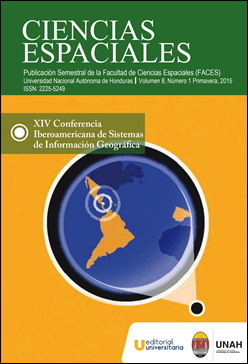Creating a spatial data infrastructure for the Greater Buenos Aires
DOI:
https://doi.org/10.5377/ce.v8i1.2062Keywords:
Spatial Data Infrastructure, Spatial Information, Standards, Conurbano BonaerenseAbstract
The Geographic Information Systems Laboratory (LabSIG) of the General Sarmiento National University (Argentina), since the beggining, has had a sustained demand for spatial information by the research teams of the Instituto del Conurbano and she has joined a growing external demand for a society that increasingly requires current and reliable information.
For this reason, in the LabSIG we have considered the need to implement a Spatial Data Infrastructure (SDI) on the Buenos Aires Metropolitan Area (area bounded by the City of Buenos Aires and the surrounding 24 municipalities). An Spatial Data Infraestructure tries to facilitate the access and integration of multiple users spatial information.
The Spatial Data Infraestructure constitution, requires an institutional framework, a data policy, a technological system that acts in support and agreement on standards that enable the sharing of information between different users. Referring to standards, we have chosen as the proposed metadata profile developed by the Instituto Geográfico Agustín Codazzi (IGAC), known by its acronym in English as LAMP (Latin American Metadata Profile).
In this paper we describe the major methodological actions performed to implement a regional SDI. We understand that the SDI used by the public as a whole will expand the knowledge and use of geographic information in a variety of situations.
Revista Ciencias Espaciales, Volumen 8, Número 1 Primavera, 2015; 474-490
Downloads
1369




